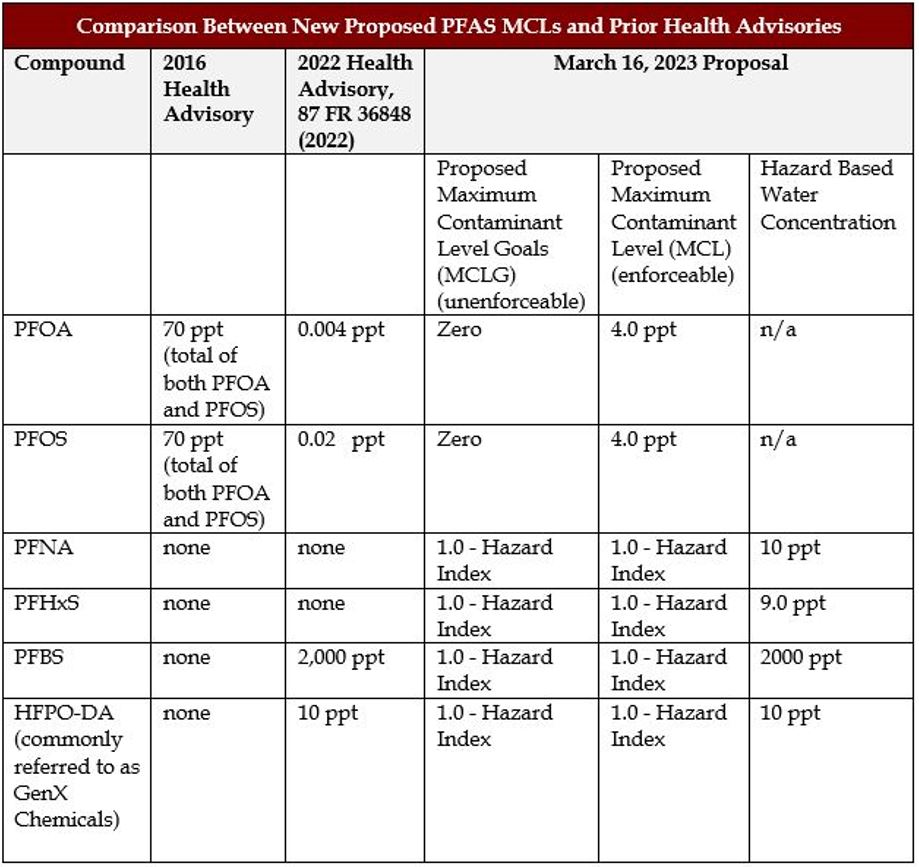EPA Proposes New Strategy for Regulating PFAS in Drinking Water

After much anticipation in the environmental community, EPA today announced proposed enforceable drinking water standards for six PFAS compounds, including PFOA and PFOS.
Unlike the agency’s two prior health advisories, these maximum contaminant levels (MCLs), if finalized, will set legally enforceable compliance standards for drinking water. Of interest is that EPA set the new proposed MCLs for PFOA and PFOS at the practical quantitation level (PQL), defined as the “lowest concentration of a contaminant that can be reliably achieved within specified limits of precision and accuracy during routine laboratory operating conditions.” According to EPA, “EPA has determined that PFOA and PFOS are likely carcinogens (i.e., cancer causing) and that there is no level of these contaminants that is without a risk of adverse health effects. Therefore, EPA is proposing the set the MCL for these two contaminants at four parts per trillion, the lowest feasible level based on the ability to reliably measure and remove these contaminants from drinking water.” Thus, although the proposed enforceable MCLs are higher than EPA’s 2022 Health Advisory for PFOA and PFOS, which were set based on health risks, the proposed new MCLs are still set at essentially the instrument detection levels.
For the four additional PFAS (PFHxS, GenX chemicals, PFNA, and PFBS), EPA is proposing a different – and more complicated – regulatory strategy based on a Hazard Index, which considers increased risks from mixtures of PFAS detected in drinking water. Under this approach, water systems will be required to use EPA’s “calculator tool,” which divides the concentration of each of the four PFAS compounds by their respective hazard based water concentration to arrive at a value. The total value yielded by this equation cannot be greater than 1.0, which is the Hazard Index MCL.

EPA will host two public listening sessions to seek individual input on concerns about the CERCLA listing proposal and its ongoing development of a CERCLA PFAS enforcement policy. EPA is also accepting additional written comments on the proposed listing and enforcement policy.
EPA reportedly received over 60,000 comments on its recent proposal to list PFOA and PFOS as hazardous substances under Superfund. Because of the fundamental importance of clean drinking water to human health, this new – and long-awaited – proposed rule on drinking water standards should also attract significant attention from the regulated community. The pre-publication version of today’s proposed rule can be found here.
In This Article
You May Also Like
EPA Moves to Vacate All Drinking Water Standards for PFAS Other Than PFOA and PFOS Italian Court Sentences 11 Over Crimes Related to PFAS Contamination